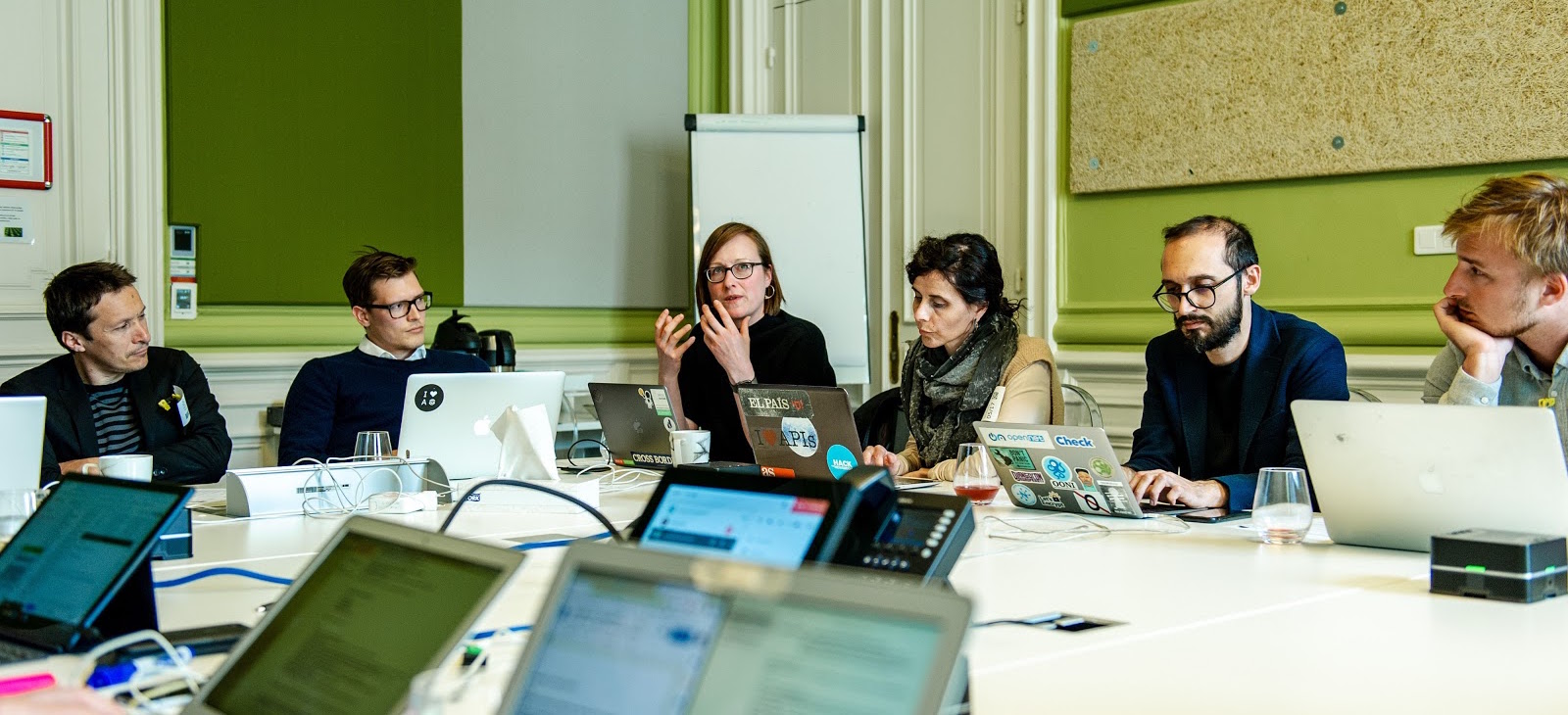❝ Artificial intelligence (AI) is a significant part of journalism already but it is unevenly distributed. Its future impact is uncertain but AI has the potential for wide-ranging and profound influence on how journalism is made and consumed. ❞
These are the opening lines of the JournalismAI report, which Polis published last week, with the support of the Google News Initiative. The research shows that AI is giving journalists more power, but with that come editorial and ethical responsibilities.
How can newsrooms benefit from the new powers offered by AI while embracing the new responsibilities and maintain the quality of their journalism?
To analyse the findings of the JournalismAI report and reflect on what’s next for AI-powered journalism, we invited 20 journalists and editors who took part in our global survey to join a brainstorming session focused around three key questions:
- What do newsrooms need to successfully adopt AI technologies?
- What actions should newsrooms take to address those needs?
- What role can collaboration play to facilitate this process?
We began by dividing in groups of five participants, giving them little direction beyond the indication to brainstorm practical ideas centred around the needs each newsroom is facing in the adoption of AI technologies. Although there were some common threads, interestingly each group landed on different issues and raised a variety of questions that just confirmed the complexity of the topic.
We need to define a strategy and clear objectives:
Do we adopt AI to improve the user experience? Or do we see AI primarily as a way to help us be better businesses? Do we consider AI just as a way to provide the same content, but faster? Or can AI help us create something entirely new?
We need to be mindful of the data we use and how we use it:
How do we collect the data that feeds the algorithms we use? How can we help our audiences to become more aware of their digital footprint? How do we handle the responsibility of being transparent about the data we use?
We need to reflect carefully on the impact of AI on newsroom roles:
The hardest part about adopting AI is not the technology itself, but how we can use it to augment the potential of the journalist. In a future when most routine tasks will be automated, how do we identify what new skills will be needed in the newsroom?
We need to improve newsrooms’ understanding of AI:
Newsrooms need more and better resources to educate staff about the risks and potential of AI. How can we facilitate access to existing education and training materials? How can we leverage collaboration between news organisations, tech companies, and research institutions? Where do we look at to stay on top of the latest trends.
From needs to actions
Following an open discussion on the outcomes of the first round of conversations, we decided to break down the field into four categories. The goal was to help us move from a brainstorming phase to the production of actionable ideas for the way forward. We asked participants to think and dream big, and to focus on what initiatives could improve the way their newsrooms interact with AI on three levels: understanding, collaboration, and innovation.
Once again, fascinating insights emerged from each group, outlining a sort of wish-list of action items that would help newsrooms improve the way they use and relate to AI:
Personalisation & Business:
AI-powered personalisation is changing the role that journalism plays in users’ lives and this has financial consequences. It’s a rather new concept, as news organisations were not used to reflect on “what’s in this for the user?” as they developed a business strategy.
The group suggested that the potential offered by AI is encouraging newsrooms to design new revenue models around three key questions: 1) Where are we now as a business? 2) Where do we want to be? 3) Why do we want to get there? AI tools can help to find answers to these questions. For instance, they can help newsrooms to learn a lot more about their audiences’ behaviours and preferences about news consumption.
Ethics & Editorial:
News organisations should have a system in place to detect bias and listen to audiences’ concerns about it. They should also improve understanding within the newsroom about algorithmic bias and related risks, by training staff on data-related activities.
The group suggested that the development of a robust checklist for the use of AI in journalism would be a valuable asset to construct norms and shared rules. This could become a style-guide for the news industry, designed in collaboration by different organisations, which could then individually adapt it to their specific needs.
Data & Technology:
The conversation was mostly around the decision of whether it’s better to develop AI technologies in-house, or to outsource the task to an external company. Most newsrooms lack the skills and resources to do it in-house but an external partner brings different challenges. For example, it was highlighted that the further tools are built from editorial, the least useful they turn out to be.
As a potential solution, the group raised a question that is almost taboo in an industry so inherently competitive as journalism: will news organisations consider sharing their data in order to build new technology collaboratively?
Education & Training:
The JournalismAI report highlights how training and education are seen as paramount to help newsrooms “meet the challenges of an AI future”.
The group suggested the creation of a tool-kit with case-studies and decision-trees that could be used to educate journalists and editors about AI, as well as convince decision makers (i.e. board members) of why investment into AI is needed. Once again, stronger ties between newsrooms and research institutions would be advisable in order to develop this sort of tool-kit collaboratively.
Looking ahead
At the end of the session, participants agreed on the importance of maintaining a forum to share best practices and foster innovation around the use of AI by journalism. They would also welcome the creation of an introductory playbook that they could bring back to their newsrooms and improve literacy about AI-powered innovation and its implications.
The international network that emerged from the JournalismAI activities of this year will be the foundation upon which we hope to keep helping news organisations in meeting their AI-related needs.
Polis and the Google News Initiative look forward to continuing this collaboration with news organisations across the globe. If you want to be part of JournalismAI, please get in touch so that we can keep you updated about our plans and how you can benefit from them.
This article was written by Selina Swift, JournalismAI intern and LSE’s MSc Student. Editing by Professor Charlie Beckett, who leads the project.
JournalismAI continues in 2020! Sign up for our monthly newsletter to stay updated.






